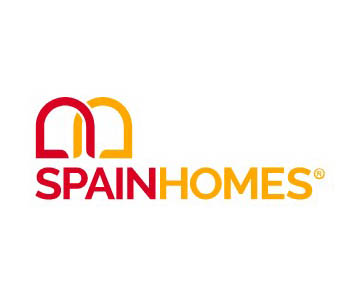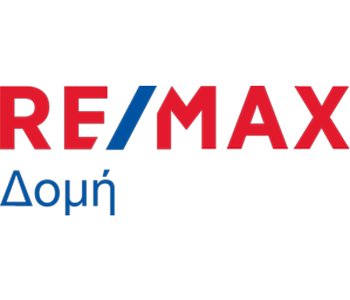
The Schengen area includes European countries, which have abolished border controls between each other to ensure free and unhindered movement for their citizens. As of 2024, the total area of the association exceeds 4.7 million km² and the total population is 448 million. The agreement was concluded in 1985 in the Luxembourg village of Schengen, after which it is named.
Applicants for entry must fulfil certain conditions known as the Copenhagen Criteria:
- Able to control the external borders of the association on behalf of the other member states and to issue uniform Schengen visas.
- Able to co-operate effectively with the law enforcement agencies of other Member States once border controls between them have been abolished to ensure a higher level of security.
- Ready to apply rules on land, sea and air border controls, issuing short-term visas, cooperation with the police, and protection of personal data.
- Ready to join and use the Schengen Information System.
The Schengen Area comprises 29 countries. Some of the European states have opted out of the agreement, while others do not currently fulfil the criteria for accession. For example, the UK and Ireland have declined to join because they have decided to maintain their own immigration and border control policies.
Content
Schengen Agreement
For identification purposes, the airport, hotel or police ask the citizen for a passport/identification card of a country that is part of the EU or has entered into the Schengen Agreement. If there are cases that threaten internal security, border controls within the zone can be reinstated for a maximum of 30 days. Such measures are most often taken during political events.
Schengen enlargement stages
| Country | Date of entry |
|---|---|
| Belgium | 26.03.1995 |
| Germany | 26.03.1995 |
| Spain | 26.03.1995 |
| Luxembourg | 26.03.1995 |
| The Netherlands | 26.03.1995 |
| Portugal | 26.03.1995 |
| France | 26.03.1995 |
| Italy | 26.10.1997 |
| Austria | 01.12.1997 |
| Greece | 26.03.2000 |
| Denmark | 25.03.2001 |
| Iceland | 25.03.2001 |
| Norway | 25.03.2001 |
| Finland | 25.03.2001 |
| Sweden | 25.03.2001 |
| Hungary | 21.12.2007 |
| Latvia | 21.12.2007 |
| Lithuania | 21.12.2007 |
| Malta | 21.12.2007 |
| Poland | 21.12.2007 |
| Slovakia | 21.12.2007 |
| Slovenia | 21.12.2007 |
| Czech Republic | 21.12.2007 |
| Estonia | 21.12.2007 |
| Switzerland | 12.12.2008 |
| Liechtenstein | 19.12.2011 |
| Croatia | 01.01.2023 |
| Bulgaria | 31.03.2024 |
| Romania | 31.03.2024 |
What is the difference between the European Union and the Schengen area
Although both the EU and Schengen are associations of European states, they still have a number of differences:
| The EU | The Schengen area |
|---|---|
| Economic and political unification of European countries | A tourist zone covering European countries whose citizens can travel freely without a passport or visa |
| Founding date: 1993 | Founding date: 1985 |
| Securing the domestic market for goods, services and capital | Promoting freedom of movement of citizens, ensuring a unified visa scheme for foreign visitors |
| Includes 27 countries | Includes 29 countries |
| Each member state follows a number of rules and regulations, EU citizens have the right to vote in the European Parliament | Member States follow the same visa policy, but each country can choose which visa applications to reject or approve |
Which countries are part of the Schengen Agreement and the European Union
| Country | The EU | The Schengen Area |
|---|---|---|
| Austria | Yes | Yes |
| Belgium | Yes | Yes |
| Czech Republic | Yes | Yes |
| Denmark | Yes | Yes |
| Estonia | Yes | Yes |
| Finland | Yes | Yes |
| France | Yes | Yes |
| Germany | Yes | Yes |
| Greece | Yes | Yes |
| Hungary | Yes | Yes |
| Iceland | No | Yes |
| Italy | Yes | Yes |
| Latvia | Yes | Yes |
| Lithuania | Yes | Yes |
| Luxembourg | Yes | Yes |
| Malta | Yes | Yes |
| The Netherlands | Yes | Yes |
| Norway | No | Yes |
| Poland | Yes | Yes |
| Portugal | Yes | Yes |
| Slovakia | Yes | Yes |
| Slovenia | Yes | Yes |
| Spain | Yes | Yes |
| Sweden | Yes | Yes |
| Switzerland | No | Yes |
| Liechtenstein | No | Yes |
| Bulgaria | Yes | Yes |
| Croatia | Yes | Yes |
| Cyprus | Yes | No |
| Ireland | Yes | No |
| Romania | Yes | Yes |
Which countries may join the Schengen area?
In 2024, the main contender to join Schengen is Cyprus. In the island nation, this is one of the main goals of the Ministry of Foreign Affairs for the near future. For the sake of supporting the initiative, the country's budget has been increased by 8.9%. A significant obstacle in its way remains the unresolved Cyprus conflict.
Cyprus had already undergone a comprehensive assessment to fulfil the criteria for Schengen countries. One of the decisive steps was integration with its information system in July 2023. Cyprus' accession will lead to a sharp increase in demand for local property, and consequently to an increase in its value. Therefore, many international investors are keen to invest in luxury projects before the country's accession.
Read more
How to obtain a Schengen visa
A Schengen visa is an authorisation for non-EU nationals to enter the territory of the association. It allows short-term temporary visits of up to 90 days in any 180-day period. There are 4 types of visas:
- Single entry visa allows entry into the zone only once.
- Multiple-entry visa allows more than one visit during the validity period of the visa.
- Transit visa allows staying in the transit zone of the airport to transfer to another flight or in the Schengen countries.
- National visa allows staying only in the territory of the state that issued it.
- Limited territorial visa (LTV) allows travelling only in certain countries of the agreement. Usually issued for humanitarian reasons or in exceptional situations.
Requirements for obtaining a visa
A foreigner applying for a visa must submit a package of documents and be fingerprinted. The biometric data will be stored in the Schengen Information System (SIS).
The applicant must also be prepared to pay processing fees, which are:
- €90 for adults.
- €45 for children aged 6 to 12 years.
- €35 for applicants from Armenia, Azerbaijan and Belarus.
- €67.5 for applicants from Cape Verde.
The visa fee may be waived for certain categories of applicants.
Basic documents
To apply for a visa to visit Schengen countries, the following documents must be prepared:
- A passport, which must expire at least 3 months after the planned date of departure from the association.
- A completed application form.
- Photographs taken in accordance with ICAO standards no more than 6 months ago, 35–40 mm wide, and face on 70-80% of the image.
- Medical insurance covering emergency care, hospitalisation and repatriation (including in case of death).
- Documents proving the purpose of stay, availability of financial means and accommodation, and the intention to return to the home country.
- Visa fee payment receipt.
The documents must be translated into English or into one of the languages of the country to which the application is submitted and certified with an apostille.
Consulates may also request additional documents depending on the individual circumstances of the applicant.
Visa application process
To obtain a Schengen visa in countries, you need to apply at a consulate. Take into account that:
- A person planning to visit more than one state should apply to the consulate of the state in which he or she will stay the longest.
- A person who plans to visit several countries and stay in them for the same period of time must apply to the consulate of the first state he/she will enter.
The application should be made no later than 15 days before the intended trip and no earlier than 6 months. Some consulates require an appointment in advance.
In most cases, the processing time is 15 days. It may be extended to 45 days if the state authorities require a more detailed review of the application and/or additional documents. Under certain conditions, family members of EU or EEA nationals covered by Directive 2004/38/EC are entitled to free and accelerated visa processing.
How to choose a European country for residence permits
A residence permit by investment programmes in Europe saves time on visa processing. Residents have the right to stay in Schengen countries for 90 days out of 180, and for the entire duration of the residence permit in the state where they received the card.
Requirements for applicants vary from country to country, but almost everywhere adults with no criminal record, debts and serious illnesses are allowed to participate in the programme.
One of the most popular options for residence permits is the Spanish golden visa. The country attracts foreign investors with its pleasant climate, picturesque nature and rich culture. 3-year residency with the possibility of multiple extensions for 5 years is issued in exchange for:
- Purchase of real estate with a value of €500,000 or more.
- Opening a bank deposit of 1 €million or more.
- Investing in shares from €1 million.
- Purchase of units of investment/venture funds from €1 million.
- Investments in government bonds from €2 million.
Foreigners wishing to obtain a residence permit quickly and with minimal investments choose the Latvian programme. A 5-year residence in the republic can be obtained for investments in a commercial organisation from €50,000 (with a one-time contribution of €10,000). The following options are also available:
- Purchase of real estate worth €250,000 and more.
- Investments in securities from €250,000.
- Investments in the banking sector from €280,000.
Programme comparison
| Country | Validity period of residence permit | Period of residence permit processing | Minimum investment threshold |
|---|---|---|---|
| Spain | 3 years | From 5 months | €500,000 |
| Hungary | 10 years | From 4 months | €250,000 |
| Greece | 5 years | From 4 months | €250,000 |
| Portugal | 2 years | From 12 months | €250,000 |
| Italy | 2 years | From 4 months | €250,000 |
| Latvia | 5 years | From 1 month | €50,000 |
| The Netherlands | 3 years | From 3 months | €1.25 million |
| Luxembourg | 3 years | From 6 months | €500,000 |
| Monaco | 1 year | From 3 months | €500,000 |
-
Volos - Nea Pagases - Soros (Agios Stefanos). Property Code 10781-9767 - Maisonette FOR SALE exclusively by Remax Domi in Volos. The property offers stunning views of the blue sea of the Pagasitikos... Details
-
Newly built luxury villa 156m, only 420m from the sea, for sale, in Zakynthos. The villa is 156sqm, it is on two levels, it has a swimming pool and it is fully furnished and equipped. It consists of 3... Details
-
Newly built luxury villa 156m, only 420m from the sea, for sale, in Zakynthos. The villa is 156sqm, it is on two levels, it has a swimming pool and it is fully furnished and equipped. It consists of 3... Details
-
Discover luxurious living in our exclusive off-plan apartment building, set to be finished by late 2026. Located in the prominent area of Halepa in Chania, this development offers stunning sunset and... Details
To find the most suitable programme for visa-free travel to Schengen countries, contact the experts at Citizenship-By.Investment. We are ready to help you obtain both residence permits and citizenship by investment on the most favourable terms.











